
25 Feb Plastic Pollution in the Ocean Craft
When plastic and other litter is not disposed of properly, it can become a part of our ecosystems and severely injure and harm wildlife. At the rate of plastic pollution that is currently happening, by 2050, there could be more plastic in the ocean than there are fish (by weight)! This craft can help demonstrate to younger kids what is happening to wildlife whenever plastic waste enters animal’s ecosystems.
As a bonus challenge: Design your favorite sea character from Bernie’s Escape from Ong Island for this craft! Send it to us either on Facebook, Instagram, or email jessicaharrisbooks2020@gmail.com, and we will post your creation!
Materials Needed:
-Construction paper
-Scissors
-Glue
-Materials to decorate with
-Plastic Waste that you find around the house
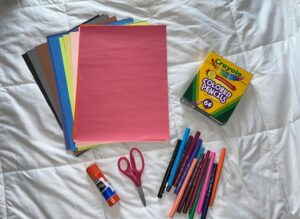
*Not pictured but may be useful:
-Hot glue gun
-Tape
Step one:
Cut out an outline of a fish or your favorite underwater animal. Make two copies, one to go underneath and one as the top layer (the one you will decorate). Also, cut out a circle that will fit inside the stomach of the animal you drew.
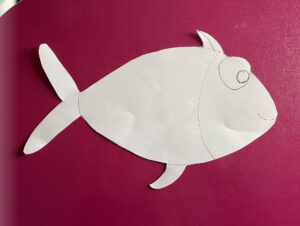
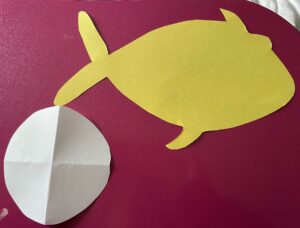
Step two:
Look around your house to find plastic waste. Recyclable or non-recyclable, plastic pollution can enter our waterways and ecosystems and harm wildlife.
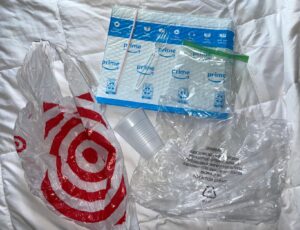
Step three:
Decorate the top layer of your underwater animal. Make sure to not draw the mouth on yet! (We will add later on) Once you are finished, tape the top of both layers of your animal so that you can flip the top layer up to see the bottom layer.
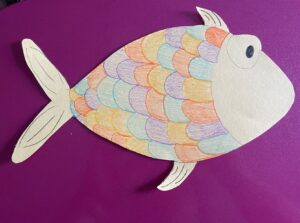
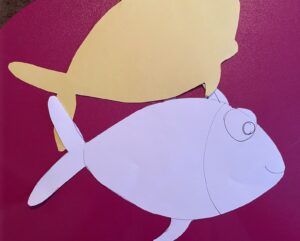
Step four:
On a separate piece of paper, draw two different mouths. One is a frown, and the other is a smile. If you want to, you can add dialogue to the pieces of paper.
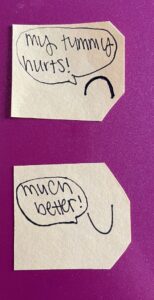
Step five:
Carefully glue your plastic waste onto the circle previously cut out. Once dried, place the circle on top of the bottom layer of your animal.
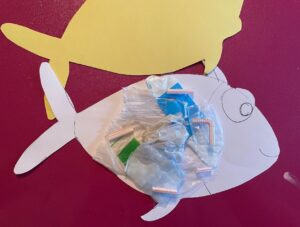
Close the top layer and place the FROWN on your animal. Your animal is frowning because their stomach is filled with plastic pollution!
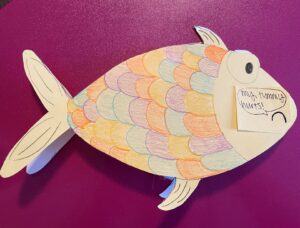
Step six:
Remove the plastic from your animal’s stomach and replace their frown with a smile!
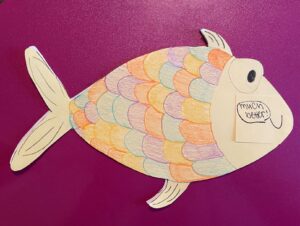
You did it! You helped your animal! To make sure that animals in our ecosystems don’t end up with plastic in their stomachs in the first place, we need to make sure we are disposing of plastic and litter the proper way, as well as reducing the amount of single-use plastics that we use in our daily lives.






